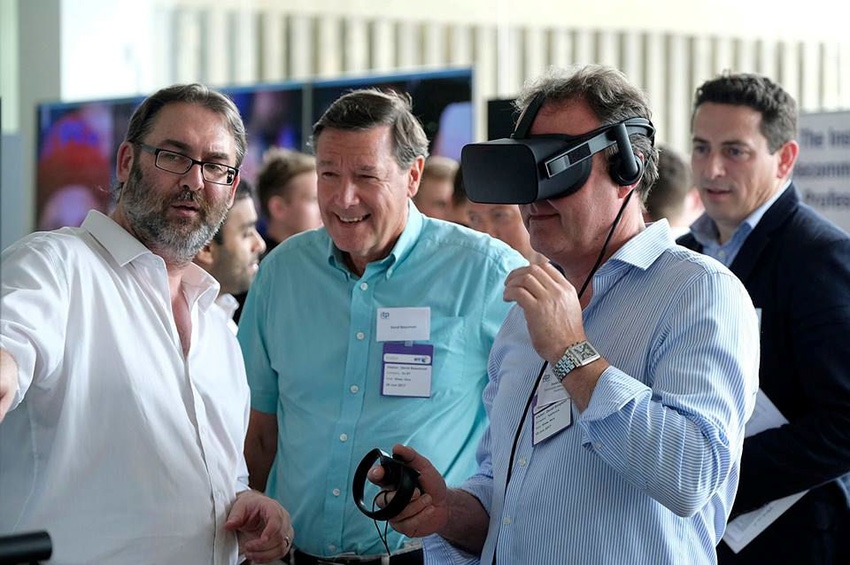Will current technological initiatives be enough to support the huge growth in video streaming or will we still be plagued by that dreaded buffering wheel for years to come?
July 3, 2017

Telecoms.com periodically invites expert third parties to share their views on the industry’s most pressing issues. In this piece Tim Wright of the Institute of Telecommunications Professionals (ITP) reports on what was discussed at a recent ITP seminar.
We are already seeing a huge growth in the streaming of video content. If we combine this with potential demand for virtual reality, augmented reality, 3600 viewing and a more interactive experience – online entertainment faces many challenges. What are the enablers that will allow this to happen? Fibre broadband, 5G, content distribution networks, adaptive bit rate, HTTP/2, and many other innovations will all play their part. But will this be enough or will we still be plagued by that dreaded buffering wheel for years to come? This was the topic of a recent ITP seminar hosted at Adastral Park, Ipswich and attended by over 80 people with expert speakers from BT, Cisco, Level 3 and Nokia.
TV service offerings
Kick-starting the discussion, Simon Jones from BT described the TV service offerings and features from the June 2017 Champions League Final. With some 47 cameras, UHD, availability over many platforms (including mobile and YouTube), and with novel interactivity features, this set the baseline for the future of online entertainment. He described the viewing experience offered in several cinemas that screened the game. According to Jones, further developments will include a more immersive surround sound with Dolby Atmos, a wider colour gamut, (especially in the darker regions), better definition with 8K TV and higher frame rates for smoother action. However, one challenge will be the bandwidths required – especially for virtual reality.
The role of IP
Ken Morse from Cisco looked at the role of IP in the move to online entertainment in an over-the-top world, and the challenge of making IP video better than linear broadcast in terms of ease of use, reliability and quality. Cisco forecast that 80% of IP traffic will be video by 2020.
However, future online entertainment is not solely about big TV where it is hard to beat linear broadcast. Rather, the future is about viewing on any device, interactivity and additional features. Adaptive bit rate will play an important role in reducing the bandwidth demands. As we transition to IP, key principles are scalability, avoiding stranding assets, reducing operational costs, finding an appropriate cost/quality balance, and maintaining the revenue streams.
Opportunities and challenges
Looking at the industry, Rory McVicar from Level 3 noted that it has reached tipping point in the opportunities and challenges of over-the-top services. Customers are impatient (they don’t want to see the buffering wheel) and, in an over-the-top world, they are no longer loyal – they will find what they want to watch from wherever. The forecasts of the transition from linear broadcast to online streaming often overlook the demographics – the 16-24 year olds watch far less on the big screen, much preferring their portable devices. To meet the quality of experience at scale, the IP protocol stacks will need to be better optimised for video with innovations such as HTTP/2 and Quick UDP Internet Connection (QUIC).
Future for video
Paul Adams from Nokia asked whether “Video killed the radio star” (the first ever song played on MTV in 1981) and concluded it won’t, but noted that video is a huge business. Content is king and customers will pay for premium content. AT&T paid $85Bn for Time Warner primarily to buy the movie titles and the customer base, and Facebook is investing heavily in video to respond to user demands. All of this is placing almost unimaginable demands on the internet; total IP traffic is forecast to increase to 330 Exabytes per month by 2022.
A panel session questioned whether the demands of online entertainment could continue to be met indefinitely. Whether the revenue models would have to change, the extent to which fibre in the access was part of the solution, whether 5G was developing in the right way to be part of the solution, and whether the solutions for entertainment were applicable in the education and healthcare sectors. The panel agreed that one of the biggest unknowns is the extent to which virtual reality and 3600 viewing will become mainstream, and the significant increase in bandwidth needed.
The ITP runs events and seminars for the telecoms industry throughout the year www.theitp.org
Read more about:
DiscussionAbout the Author(s)
You May Also Like








.png?width=300&auto=webp&quality=80&disable=upscale)


_1.jpg?width=300&auto=webp&quality=80&disable=upscale)


.png?width=800&auto=webp&quality=80&disable=upscale)